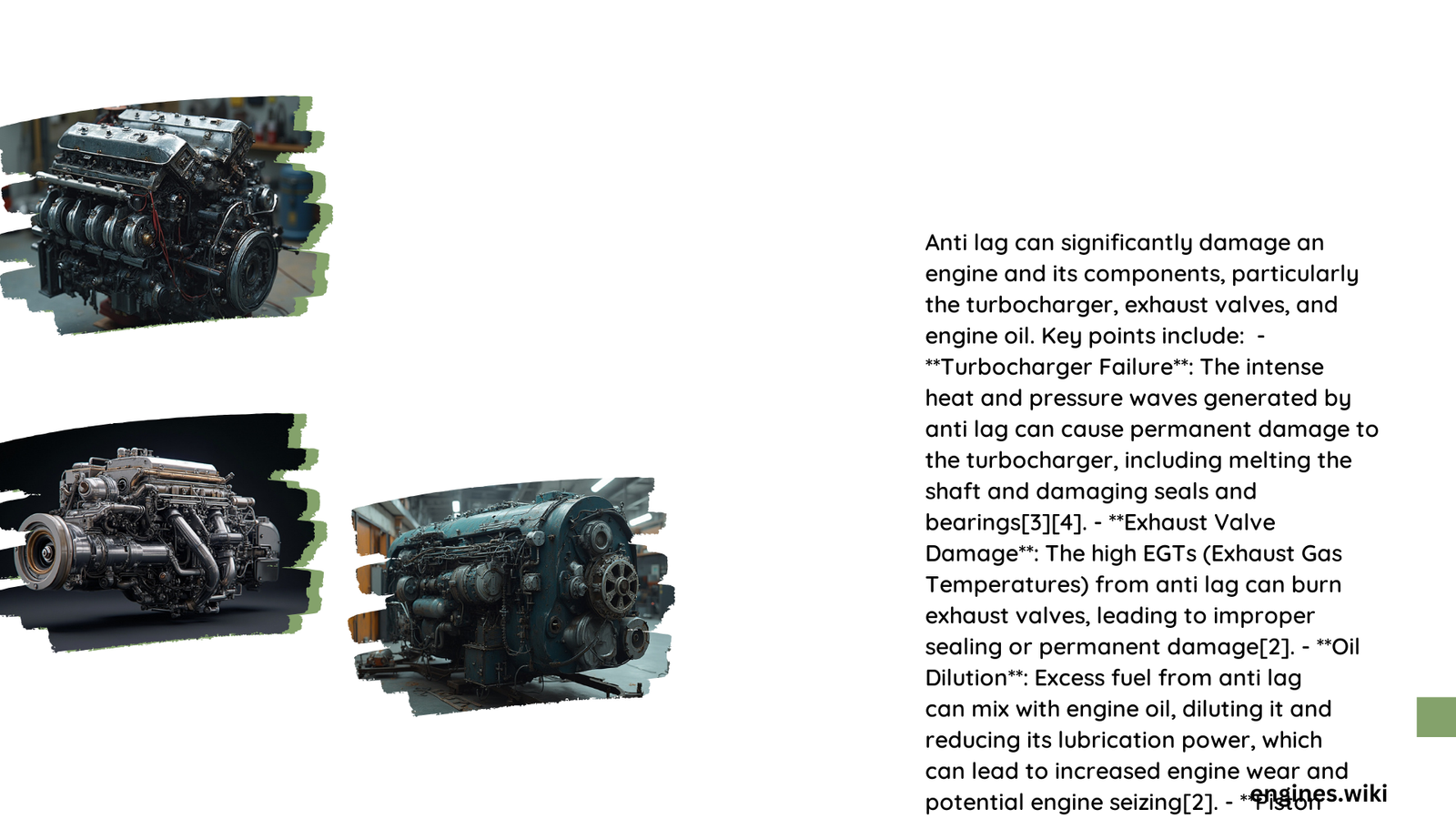Anti-lag systems (ALS) can significantly stress engine components through extreme thermal and mechanical loads. While designed to reduce turbo lag, these systems generate intense exhaust temperatures and pressure pulses that potentially accelerate component wear, particularly in turbochargers, exhaust manifolds, and critical engine parts. Understanding the precise mechanisms of potential damage requires a nuanced technical examination of their operational characteristics and engineering implications.
What Happens When Anti-Lag Systems Activate?
Anti-lag systems create complex mechanical interactions within turbocharged engines. When activated, they generate extraordinary stress through several key mechanisms:
How Does Mechanical Stress Manifest?
- Continuous Turbocharger Rotation: Maintains high-speed spinning even during throttle closure
- High-Pressure Exhaust Pulses: Creates intense mechanical vibrations
- Increased Bearing Load: Accelerates potential component degradation
What Thermal Challenges Emerge?
| Component | Temperature Impact | Potential Damage Risk |
|---|---|---|
| Turbocharger | 800-1200°C | High |
| Exhaust Manifold | 600-900°C | Moderate to High |
| Engine Valves | 500-750°C | Moderate |
Can Anti-Lag Permanently Damage Engines?

The potential for permanent engine damage depends on several critical factors:
- System Design Quality
- Professional-grade systems minimize destructive potential
- Aftermarket implementations carry higher risk
-
Racing-specific configurations have advanced protective mechanisms
-
Maintenance Frequency
- Regular inspections critical
- Proactive component replacement recommended
- Comprehensive cooling system management essential
What Are Specific Wear Mechanisms?
Turbocharger Degradation
- Increased rotational stress
- Accelerated bearing wear
- Potential shaft damage from extreme temperatures
Exhaust System Implications
- Material fatigue from thermal cycling
- Potential manifold cracking
- Accelerated oxidation of metal components
How Can Damage Be Mitigated?
Recommended strategies include:
- Implement advanced cooling systems
- Use high-temperature resistant materials
- Develop sophisticated electronic management
- Limit continuous anti-lag system activation
- Regular professional diagnostics
Technical Recommendations
For enthusiasts considering anti-lag systems:
- Consult specialized automotive engineers
- Invest in high-quality professional installations
- Budget for increased maintenance
- Monitor engine performance metrics closely
Quantitative Damage Perspective
Research indicates potential consequences:
– 30-50% increased component wear rate
– Potential turbocharger lifespan reduction by 40%
– Higher maintenance frequency
Conclusion
While anti-lag systems offer performance benefits, they introduce significant mechanical stress. Proper implementation, maintenance, and understanding of operational limitations are crucial to minimizing potential engine damage.
